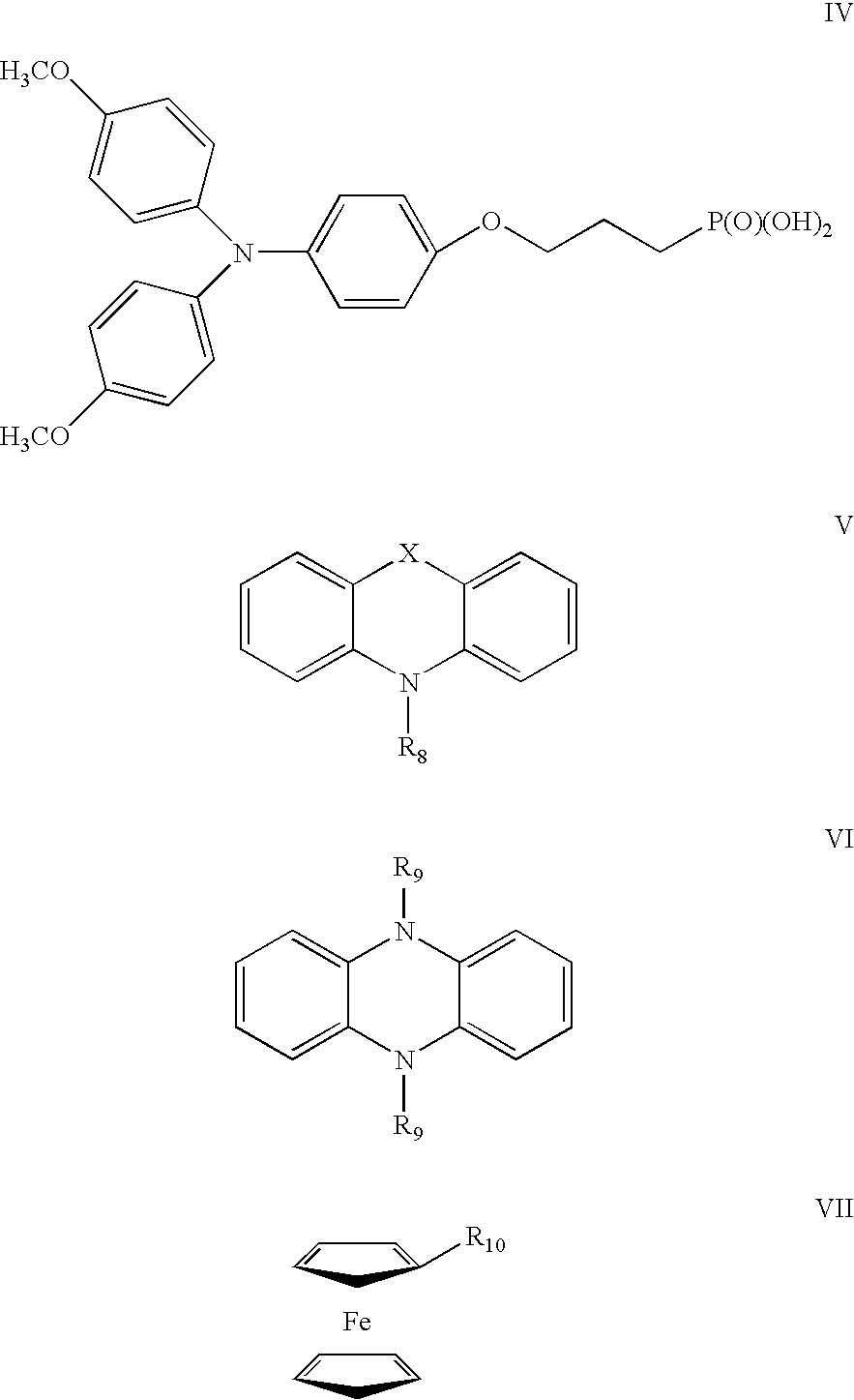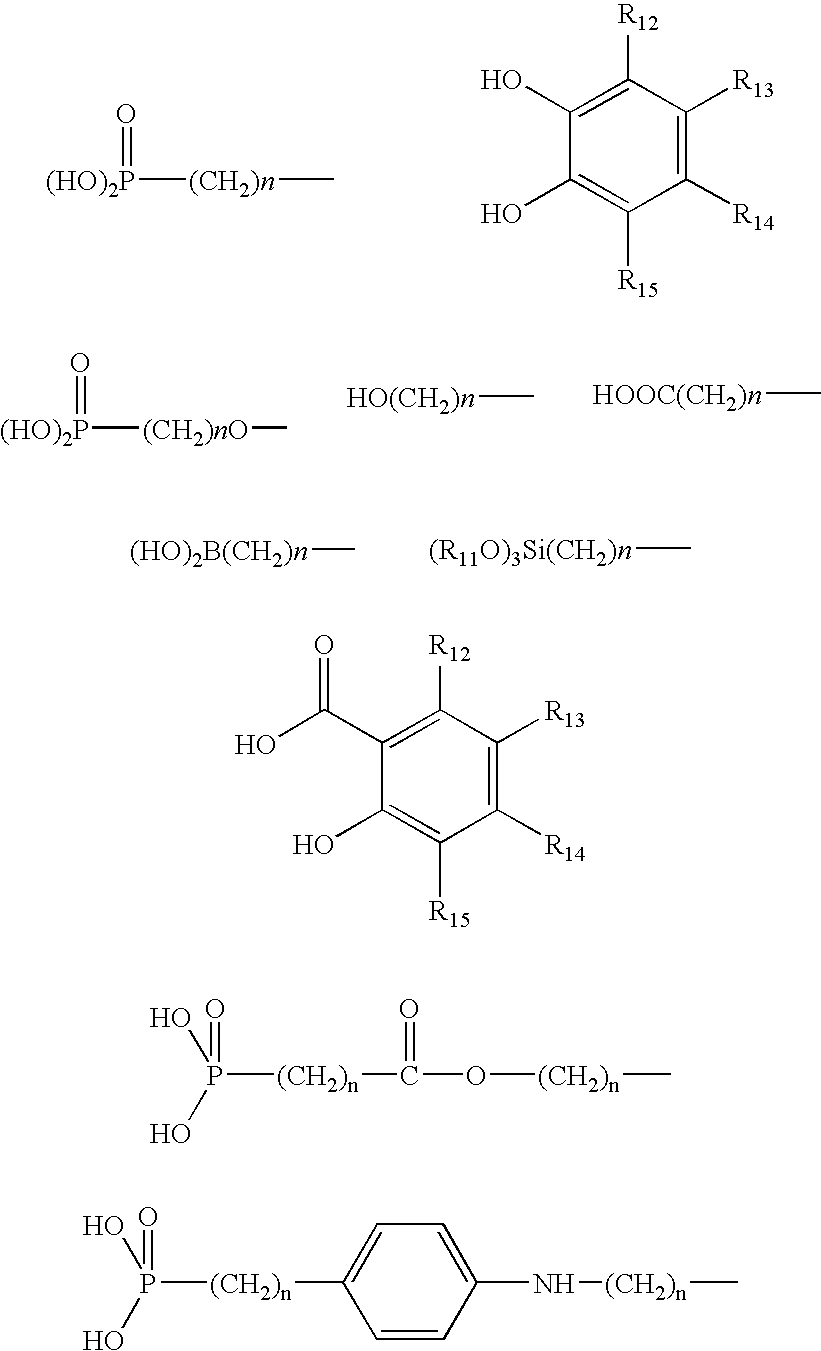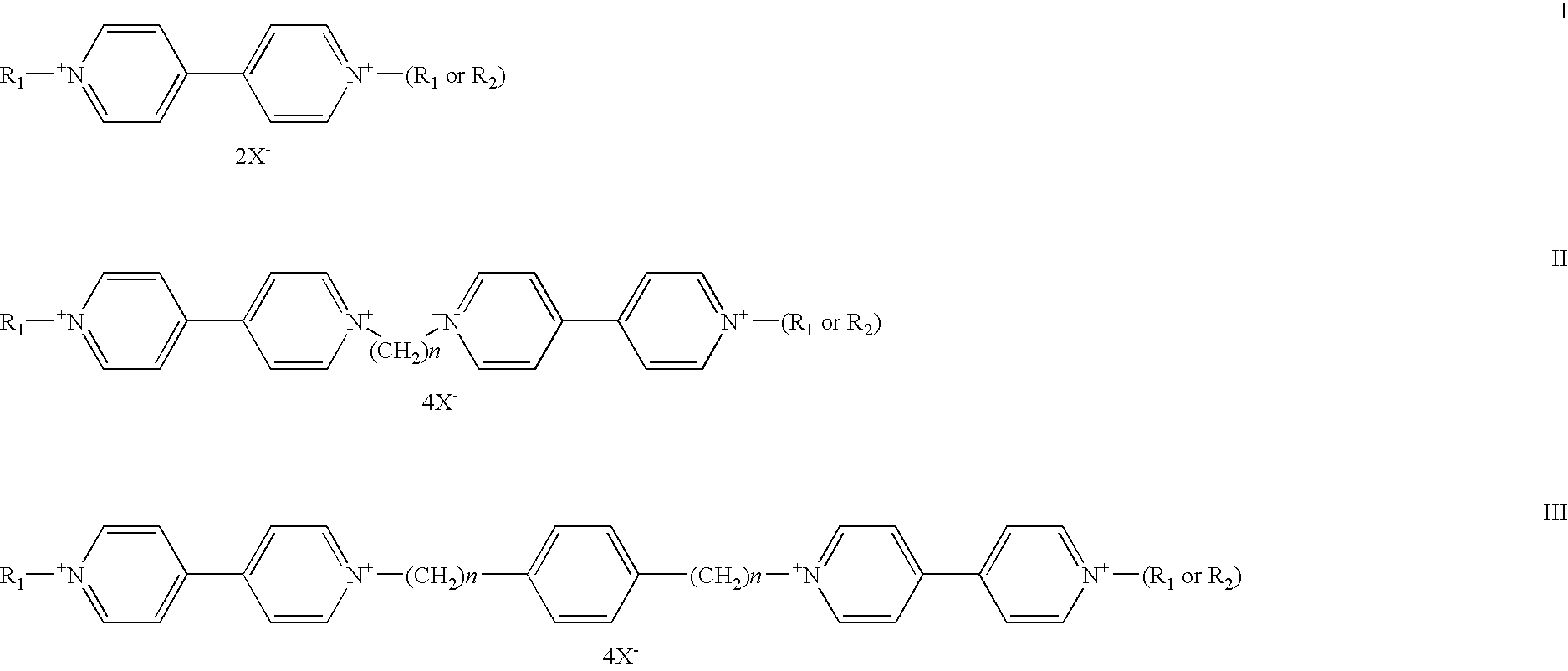Nanoporous and nanocrystalline film and electrochromic device
a nanoporous and nanocrystalline technology, applied in the field of electrochromic devices, can solve the problems of moderate increases in the switching rate, slower switching speed, and more rapid switching time of these devices
- Summary
- Abstract
- Description
- Claims
- Application Information
AI Technical Summary
Benefits of technology
Problems solved by technology
Method used
Image
Examples
example 1
[0072](a) A 2.5 cm×2.5 cm transparent nanostructured semiconductor film, consisting of a 4 μm thick layer of fused TiO2 nanocrystallites, was deposited on a 3.3 cm×3.3 cm fluorine doped tin oxide on glass substrate (15 Ω, 0.5 μm thick, Libby-Owen Ford Tec 15). A colloidal TiO2 dispersion was prepared by hydrolysis of titanium tetraisopropoxide. The average diameter of the initially formed crystallites (7 nm) was increased by autoclaving at 200° C. for 12 hours to 12 nm. Concentrating the autoclaved dispersion to 160 g / l and adding Carbowax (Trade Mark) 20000 (40% wt. equiv. of TiO2) yielded a white viscous sol. (Carbowax 20000 is an ethylene glycol polymer whose average molecular weight is 20000.) A 4 μm thick layer of the above sol was deposited using a screen printing technique on the conducting glass substrate. The resulting gel-film was dried in air for 1 h, sintered in air at 450° C. for 12 h and stored in a darkened vacuum desiccator prior to use. The resulting transparent nan...
example 2
(a) Switching Times of Electrochromic (EC) Window
[0097]The rate of colouration of the 2.5 cm×2.5 cm EC window assembled as described in Example 1 was measured following application of a voltage of 1.2 V which biased the viologen modified nanostructured TiO2 film negative of the phenothiazine modified SnO2:Sb film. The colouration time, defined as the time taken for the transmittance to decrease by two-thirds of the difference between the steady-state transmittances in the bleached and coloured states, was about 450 ms. The rate of bleaching of the same EC window was measured by reversing the polarity of the voltage applied to the previously coloured device. The bleaching time, defined as the average time taken for the transmittance to increase by two-thirds of the difference between the steady-state transmittances in the coloured and bleached states, was about 250 ms.
[0098]The measured colouring and bleaching times are, as far as the inventors are aware, the fastest switching times ...
example 3
Preparation of β-(10-phenothiazyl) Propyl-phosphonic Acid (Illustrated in Scheme 2)
[0110]Steps (i)-(v) of Scheme 2 are described in relation to Scheme 1 in Example 1(e).
XVa: β-(10-phenothiazyl) Propyl-phosphonate
[0111]β-(10-phenothiazyl) Propyl chloride IX (5 g, 1.8×10−2 M) was refluxed in 5 equivalents of triethyl phosphite for 48 h. The unreacted triethyl phosphite was removed by vacuum distillation to yield the crude product XVa which was taken to the next step without further purification.
[0112]1H NMR (chloroform-d): δ 1.17-1.22 (t, 6H, J=7.1 Hz), δ 1.79-1.92 (m, 2H), δ 2.03-2.13 (m, 2H), δ 3.92-4.14 (m, 6H), δ 6.84-7.17 (m, 8H, aromatic)
XVI: β-(10-phenothiazyl) Propyl Phosphono-trimethyl Silyl Ester
[0113]To an ice cold solution of XVa (0.15 g, 4×10−4M) in CHCl3 (dry) was added a cold solution of bromo-trimethylsilane (0.18 g, 1.2×10−3 M) in CHCl3 (dry). The reaction mixture was stirred (0° C., 1 h) and then at room temperature for 16 h. The solvent was removed under reduced pre...
PUM
| Property | Measurement | Unit |
|---|---|---|
| thickness | aaaaa | aaaaa |
| distance | aaaaa | aaaaa |
| distance | aaaaa | aaaaa |
Abstract
Description
Claims
Application Information
 Login to View More
Login to View More - R&D
- Intellectual Property
- Life Sciences
- Materials
- Tech Scout
- Unparalleled Data Quality
- Higher Quality Content
- 60% Fewer Hallucinations
Browse by: Latest US Patents, China's latest patents, Technical Efficacy Thesaurus, Application Domain, Technology Topic, Popular Technical Reports.
© 2025 PatSnap. All rights reserved.Legal|Privacy policy|Modern Slavery Act Transparency Statement|Sitemap|About US| Contact US: help@patsnap.com



